SERVICES
Thermography and Thermal Imaging Analysis Services
Services
What Is Infrared Thermography?
Infrared thermography, sometimes called thermal imaging, is a technology that uses infrared thermal imaging cameras to create images of heat patterns. These images can be used to find hot spots or areas of high energy consumption in electrical equipment, buildings, and other structures.
How Does It Work?
A thermal infrared camera work by detecting the infrared thermal radiation emitted by objects and converting it into an electrical signal. This signal is then processed to create an image that can be interpreted by a trained thermographer.
What Are The Benefits?
Thermography has many benefits, including the ability to:
- Detect hot spots or areas of high energy consumption in electrical and mechanical equipment
- Detect early stages of failure in mechanical equipment
- Monitor process and chemical reactions
- Locate hidden leaks
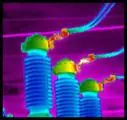
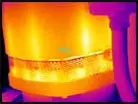
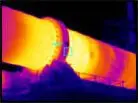
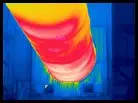
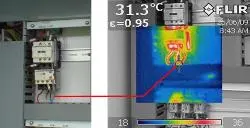
How can thermography be used in Predictive Maintenance?
Thermography can be used in predictive maintenance programs to detect early stages of failure in critical assets. By monitoring the temperature of equipment over time, thermographers can identify temperature differences and hot spots that may indicate an impending failure. This information can then be used to schedule repairs or replacements before the equipment fails completely.
Our Predictive Maintenance Programs
At Failure Prevention, we offer thermography services as part of our predictive maintenance programs. We can provide thermographic inspections of electrical equipment, buildings, and other structures to help you identify potential problems before they cause costly downtime. Our thermographers are highly trained and experienced in interpreting thermal images, and we use the latest infrared cameras to create clear and accurate images.
To learn more about our thermography services, or to schedule an inspection, contact us today. We’ll be happy to answer any of your questions and help you get started on the path to predictive maintenance.
Types of Infrared Thermometers
There are two main types of infrared thermometers: contact and non-contact. Contact thermometers are typically used to measure the temperature of objects that can be touched, such as pipes or machinery. Non-contact thermometers, on the other hand, are used to measure the temperature of objects that cannot be touched, such as hot gasses or liquids.
Contact thermometers typically use a probe that is placed directly on the surface of the object being measured. The probe is then connected to a thermocouple or thermistor, which converts the temperature into an electrical signal. This signal is then processed by the thermometer to display the temperature in a thermal image. This is often used when evaluating potential failure points in mechanical equipment.
Non-contact thermometers work by measuring the infrared radiation emitted by an object. This radiation is typically converted into an electrical signal, which is then processed to display the temperature. Non-contact thermometers are often used to measure the surface temperature of hot gasses or liquids, as well as surfaces that cannot be touched.
Infrared Thermography Testing Techniques
Applications of Infrared Thermography in Condition Monitoring
Thermography can be used in predictive maintenance programs to detect early stages of failure in mechanical equipment. By monitoring the temperature of equipment over time, thermographers can identify hot spots that may indicate an impending failure. This information can then be used to schedule repairs or replacements before the equipment fails completely.
Infrared thermography can also be used to detect hot spots or areas of high energy consumption in electrical equipment and other structures. This information can be used to improve energy efficiency or to prevent potential problems before they cause costly downtime.
Characteristics of Infrared Thermography Equipment
To assist with our 20/20 vision – standard equipment for our techs is an AMP clamp
We use AMP clamps with Bluetooth capabilities to seamlessly integrate all information into the image. With this technology, our technicians are able to compare the currents between the different phases. This helps diagnose the cause of electrical problems faster and more accurately.
It’s the little things you do that add up to Being Green…
Environmental issues are at the top of everyone’s mind. Not only is it good practice, but consumers are concerned that their companies are taking action to Be Green and environmentally sound.
You want your machines running at top performance and efficiency.
Being Green means taking what you have and continually improving your efficiencies and assets. Failure Prevention Associates helps you do achieve those goals.

